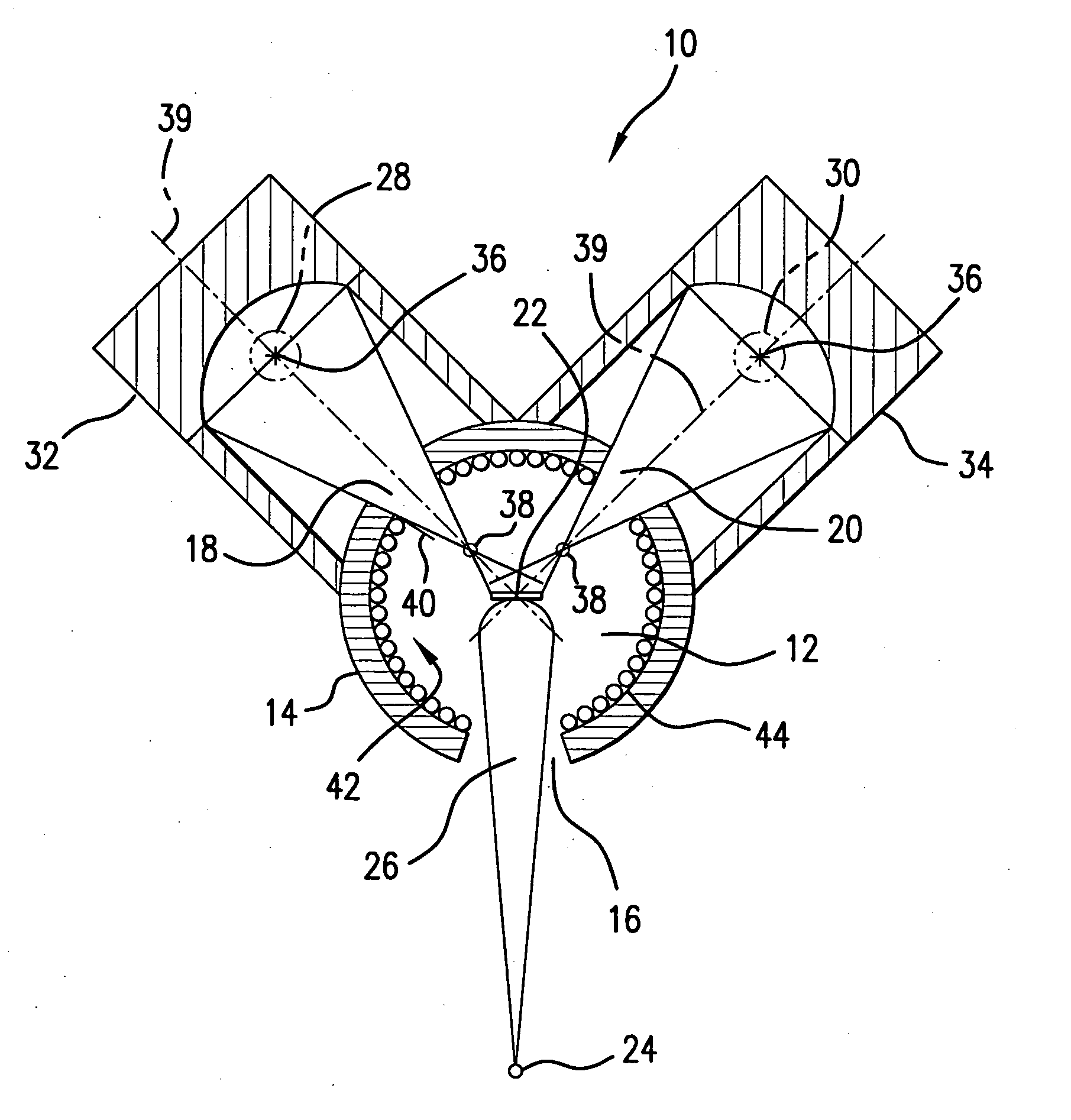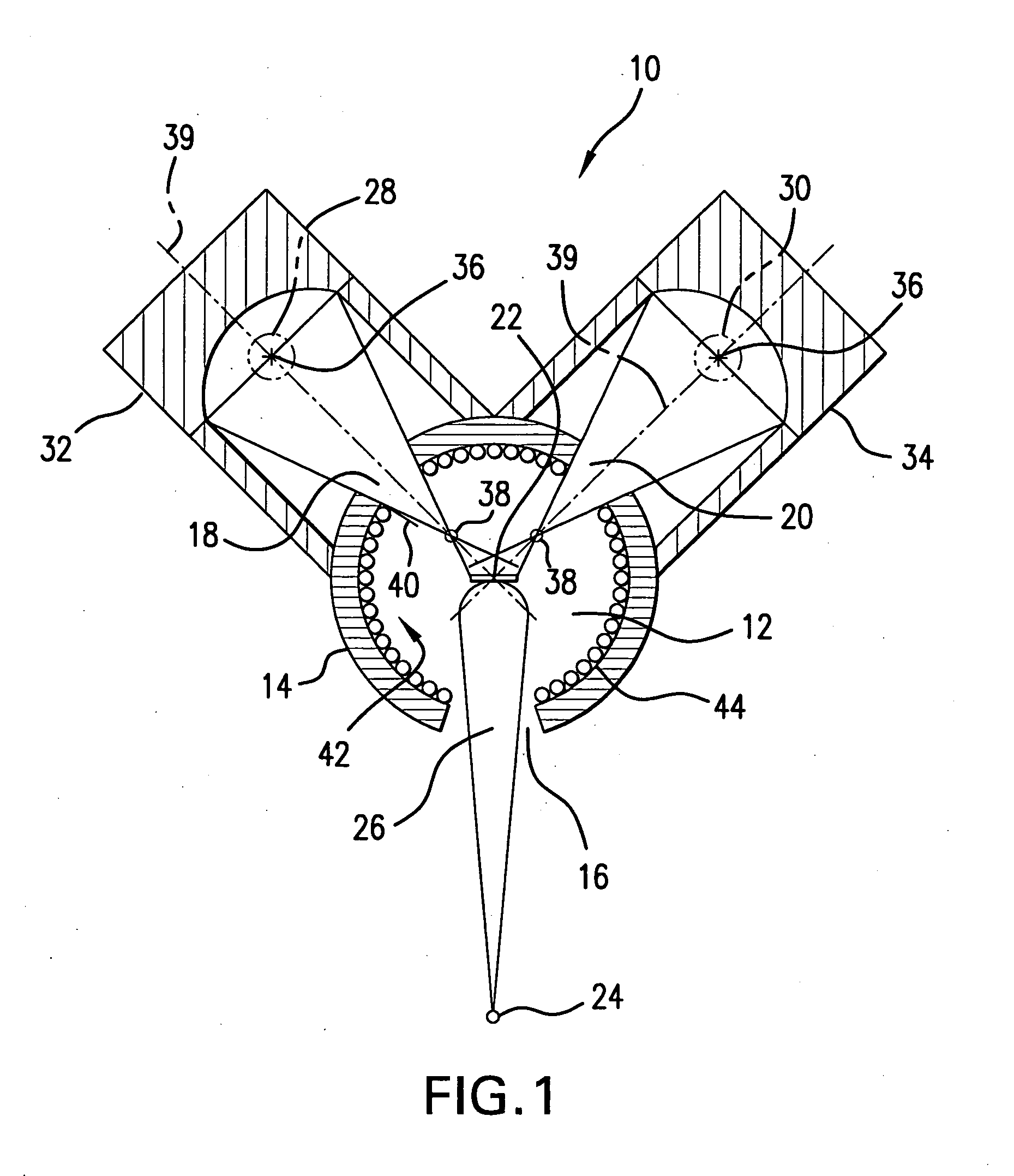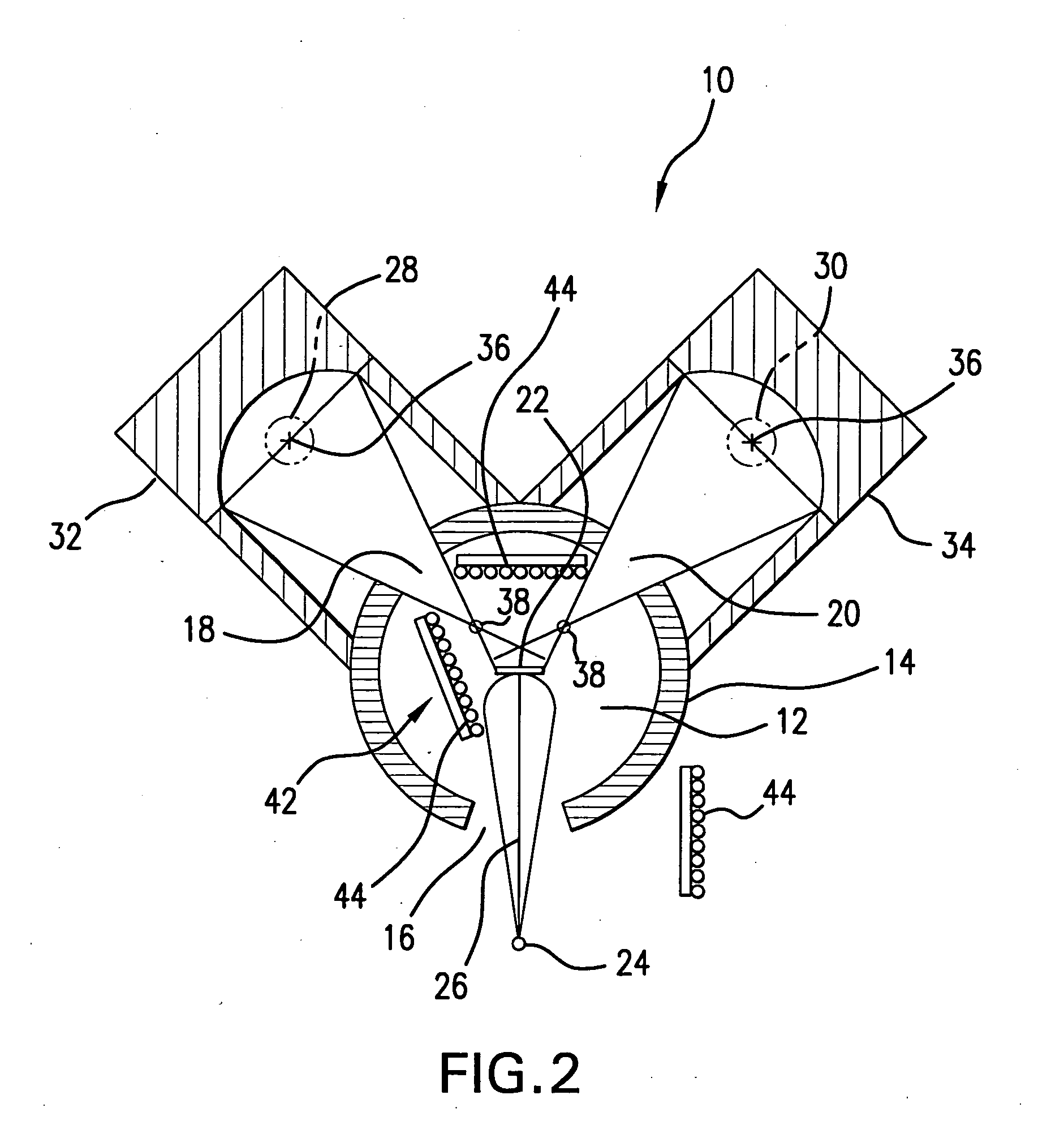Non-contact heater and method for non-contact heating of a substrate for material deposition
a non-contact heating and substrate technology, applied in the field of non-contact heating of objects, can solve the problems of degrading its properties, unwanted obstacles in the deposition of high-quality films of multi-component materials, and relatively expensive production
- Summary
- Abstract
- Description
- Claims
- Application Information
AI Technical Summary
Benefits of technology
Problems solved by technology
Method used
Image
Examples
Embodiment Construction
[0044] The principles of the present inventive concept are applicable to the non-contact heating of any object, however, for purposes of a better understanding of the present invention, and as one of the examples of the particular application of the subject non-contact heating technique, the following description is directed primarily to the non-contact heating of a substrate for material deposition. As such, referring to FIGS. 1 and 2, a non-contact heater 10 includes a housing which has a deposition cavity 12 defmed by a housing wall (or a cavity wall) 14, in which a deposition opening 16 and a pair of radiation paths 18 and 20 are formed. An object to be heated; e.g., a substrate 22, is mounted internal the deposition cavity 12 at a predetermined position therein. A deposition source 24 is mounted remotely from the deposition cavity 12 to generate a deposition flux 26, which enters the deposition cavity 12 through the deposition opening 16 for coating the substrate 22 to form cry...
PUM
| Property | Measurement | Unit |
|---|---|---|
| area | aaaaa | aaaaa |
| diameter | aaaaa | aaaaa |
| diameter | aaaaa | aaaaa |
Abstract
Description
Claims
Application Information
 Login to View More
Login to View More - R&D
- Intellectual Property
- Life Sciences
- Materials
- Tech Scout
- Unparalleled Data Quality
- Higher Quality Content
- 60% Fewer Hallucinations
Browse by: Latest US Patents, China's latest patents, Technical Efficacy Thesaurus, Application Domain, Technology Topic, Popular Technical Reports.
© 2025 PatSnap. All rights reserved.Legal|Privacy policy|Modern Slavery Act Transparency Statement|Sitemap|About US| Contact US: help@patsnap.com



